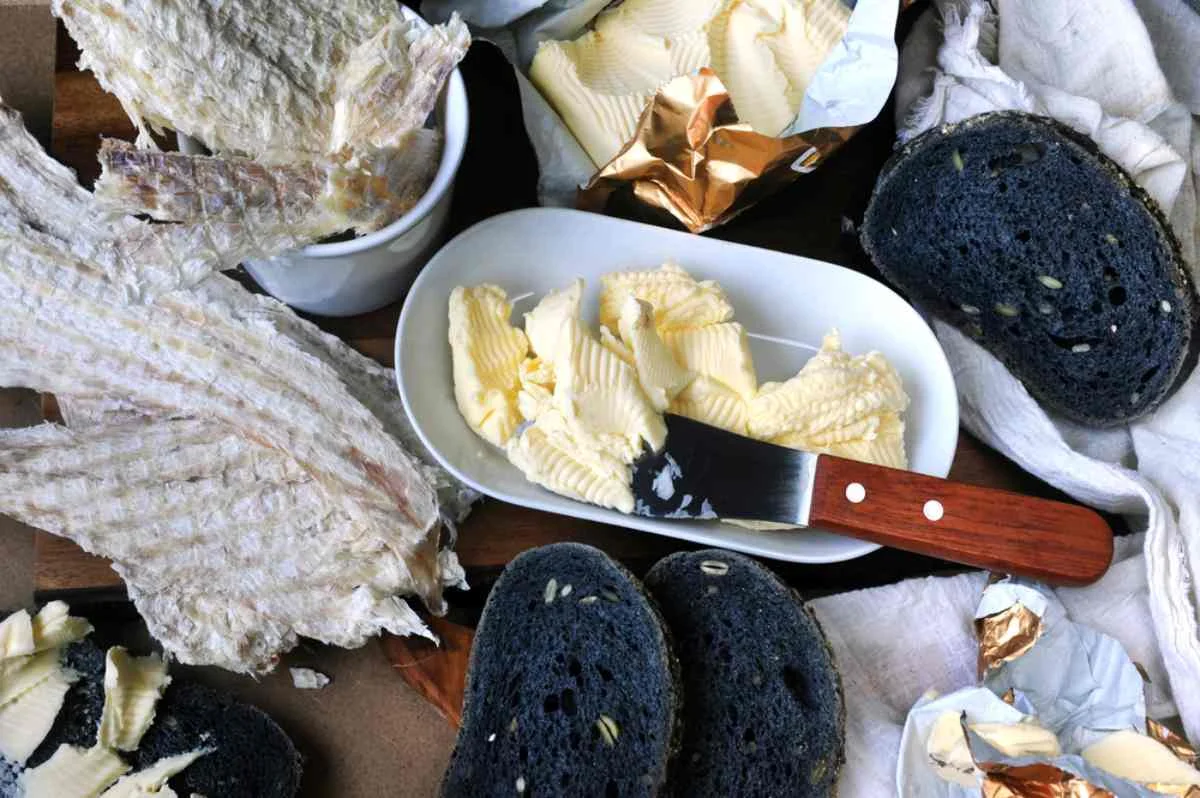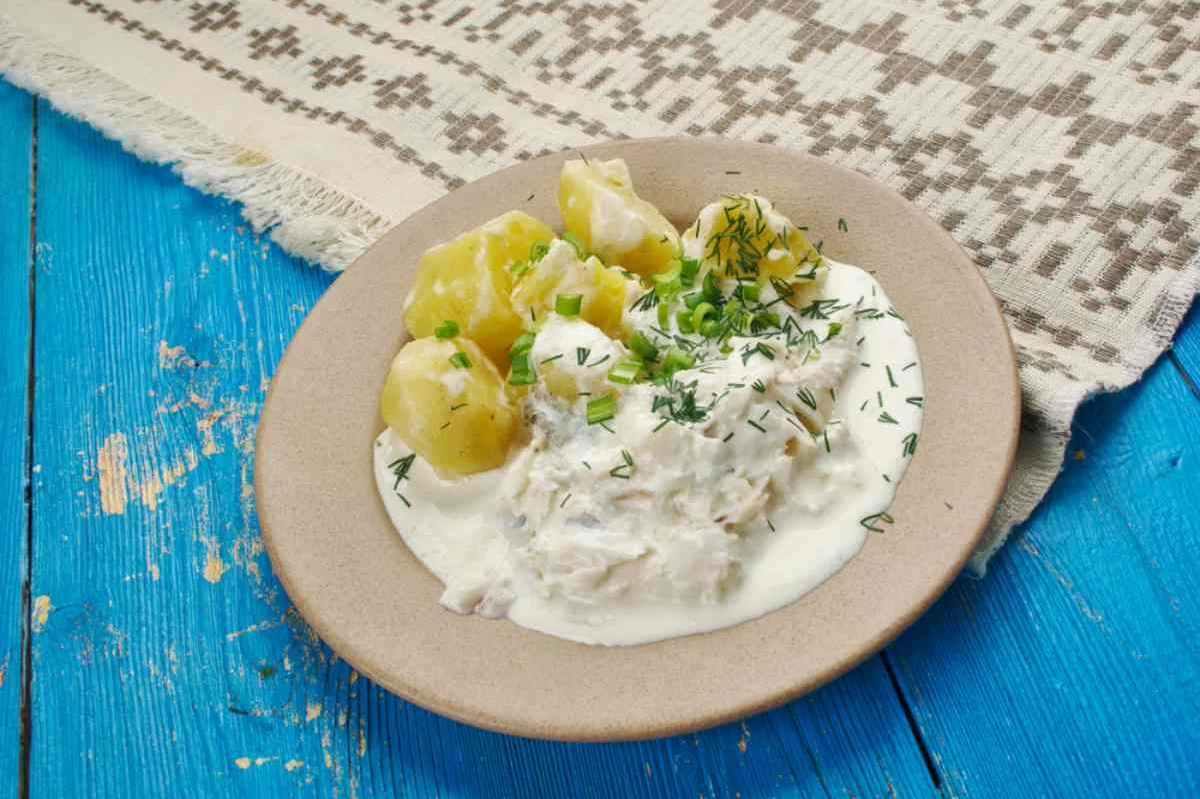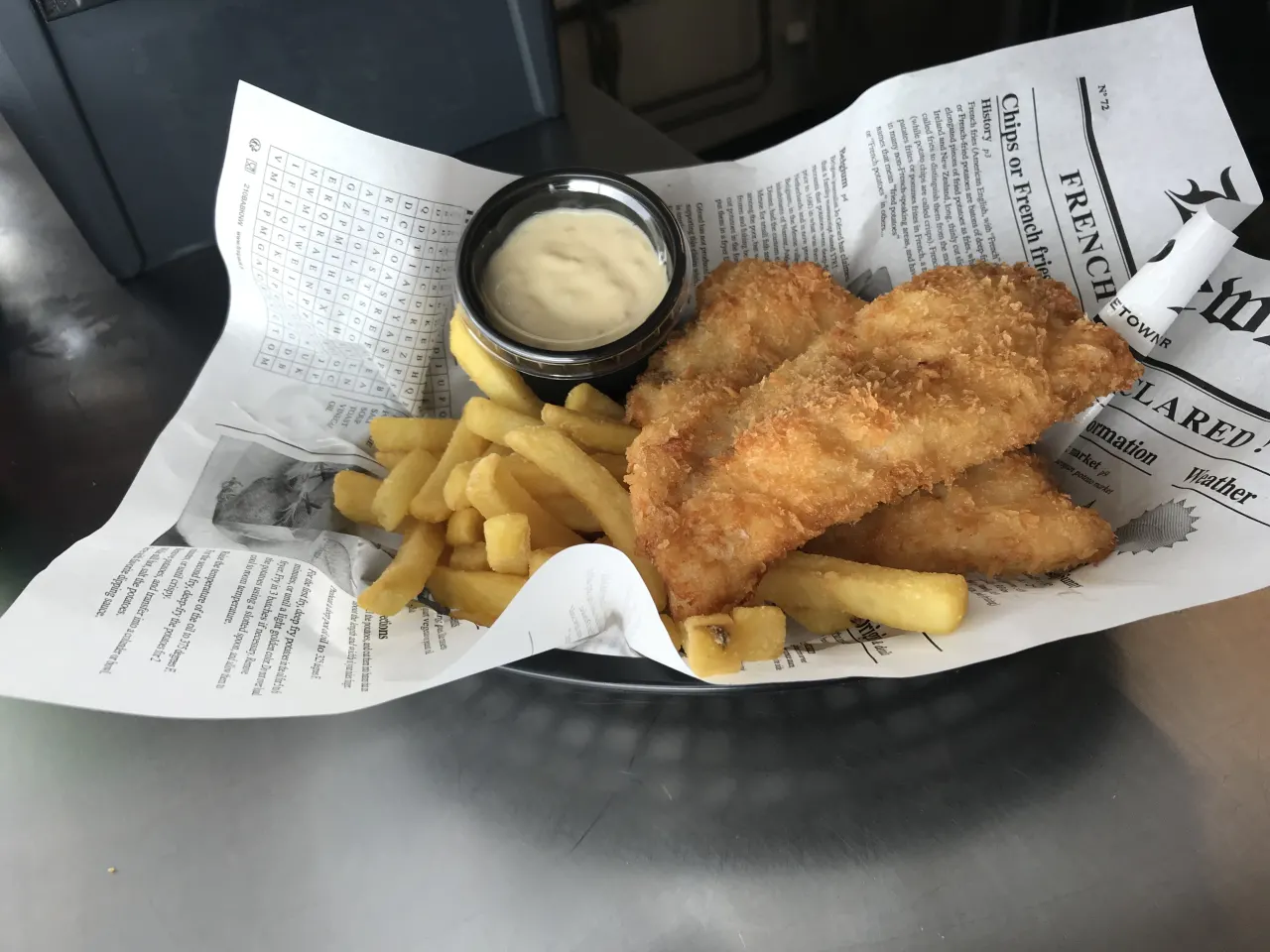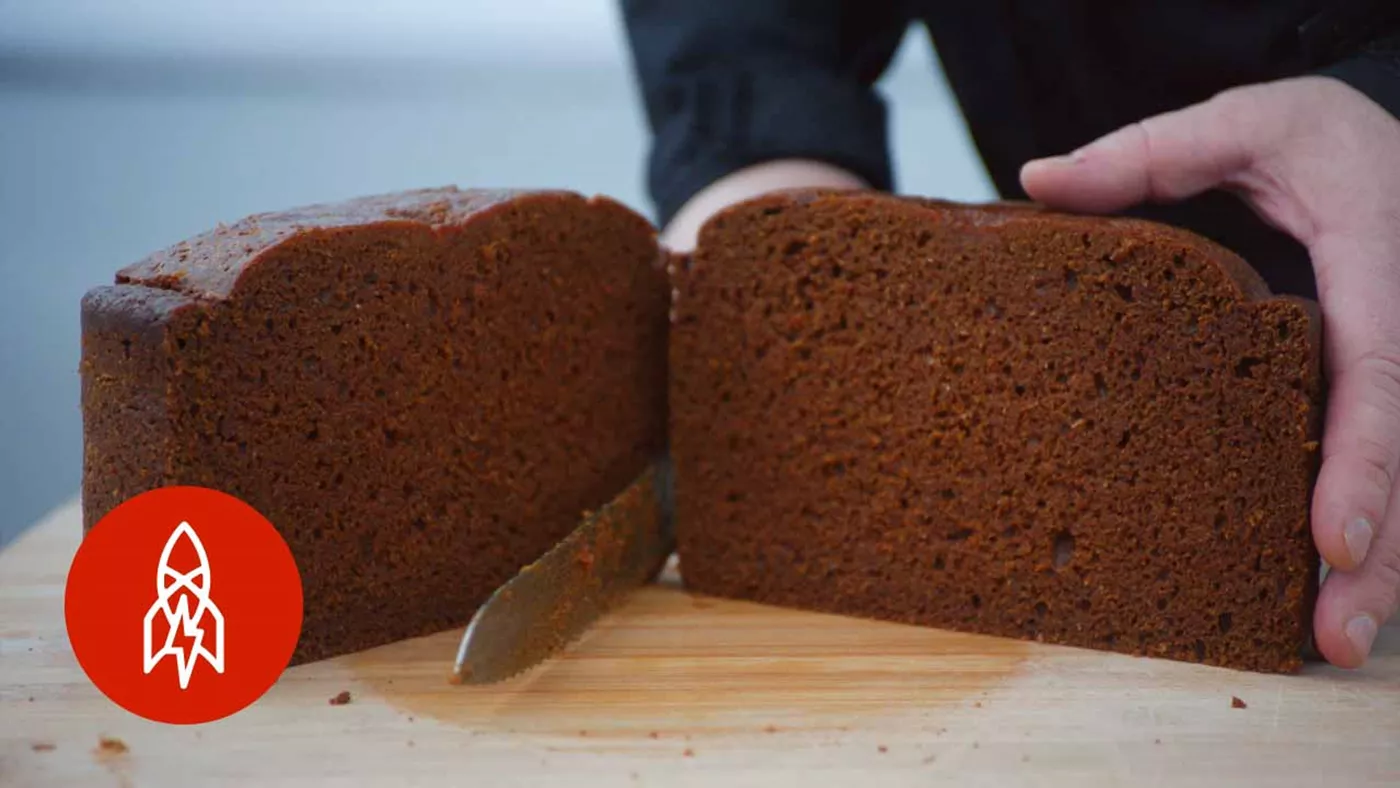Iceland - what really is a national dish?
- rosemary
- Jul 1, 2024
- 7 min read
"we're talking about a cuisine deeply influenced by isolation and the harsh climates of the North." Campervan Reykjavik
I'm continuing my world food tour today, and have landed on Iceland, because I've decided to go west from Scandinavia to Iceland which is sometimes lumped in with Scandinavia sometimes not. It's definitely part of Europe however, even though it looks to me, on the map, that it is nearer to North America. Settled by the Norwegians in 874AD and other Scandinavians, they brought their captive women and slaves/serfs with them - recently proved in DNA testing showing that there those women were mostly from France or Britain. Ruled by Norway and/or Denmark or a combination of the two for centuries they became completely independent after WWII. Today, of course, like virtually all of the world and thanks to globalisation of all kinds, it is hugely influenced by 'Western' culture.
It is not as cold as it should be, because of it's location on a major fault line and the warm Gulf Stream, it has volcanoes and hot springs and a temperate climate which enables it to raise sheep and horses and also grow crops of grain. And of course there are fish:
"Like in most of Scandinavia, the cuisine is entirely inspired by the ingredients Icelanders have around them, from the free-roaming sheep to the cod, herring, and Arctic char that splash around the cold waters. Beyond its freshness, Iceland's food is pure—with less of a focus on GMOs and artificial ingredients." Claire Volkman/Vogue

"Lambs in Iceland are not fed on grain or given growth hormones. They roam freely outdoors from Spring to Autumn, therefore, their diet is wholly natural, consisting of grass, sedge, moss campion and berries." Adventures.com
And here we come to the question of national dishes and what people really eat as opposed to what food writers and tourist bodies say they eat. I have now perused lots of sites putting forward their ideas of what are the most Icelandic foods, and I have to say, very few of them, if any really, talked about what people actually ate.
Obviously way back in the past a country such as Iceland, which is really somewhat bleak in climate and therefore vegetation, relied enormously on frugality and methods of preserving the foods of the warmer months for the cold ones. And so you will still find many 'you've got to try ...' recommendations and also 'official national dish' wording for Hákarl - fermented shark:
The shark is on the right in the righthand picture - that's rye bread on the left - which I shall come to. Let Atlas Obscura explain the full horror of this particular delicacy:
"Greenland sharks are the world’s longest-living vertebrates, often partially blind, and can grow up to 24 feet long. Also, their meat is poisonous. Eaten fresh, it can cause a powerful, uncomfortable intoxication. But this didn’t stop clever Vikings from figuring out that burying pieces of the massive sharks under rocks and dirt for several weeks would neutralize these toxins. After digging them up, they would hang the meat so it could age some more.
The uric acid present in fresh Greenland shark contributes to its ammonia-like smell. Soft, white hákarl from the shark’s body has a cheese-like texture, while reddish meat from the belly is chewier. Those who sample it describe the flavor in far-ranging terms, from fishy and mild to strong like blue cheese. Most agree that the lingering aftertaste can be described only as urine."
Apparently it is now only made in the Shark Museum but it was/is indeed the national dish and tops heaps of lists of 'Foods you must try when in Iceland'. Maybe it's a kind of drunken dare - it's often consumed with a shot of Brennivín which I assume is a kind of vodka.
However I also saw that a more recent popular vote for a national dish resulted in Lamb topping the nominations. Which is a bit broad really because there are a few 'traditional' dishes made from lamb that range from the repulsive to the absolutely delicious, because the lamb is indeed very pure and very tasty.
The repulsive - that lamb's head in the picture at the top:
"a traditional Icelandic dish consisting of a sheep's head cut in half, singed to remove the fur, and boiled with the brain removed, sometimes cured in lactic acid. Svið served with mashed potatoes and swede" Wikipedia
Then there's the equally repulsive ram's testicles, outer casing removed, boiled, pickled in whey and pressed into a block.

There may well be other repulsive things made from lamb but moving on we next come to smoked lamb which is something we still do to meats, but not generally to lamb and is gnerally delicious. It's another way of preserving food from early times when sheep dung was added to the fire for the smoking. These days not so much sheep dung though very possibly some people still cling to ancient ways. It's a traditional Christmas dish, generally served with potatoes, green peas, white sauce, and pickled red cabbage. A bit ho-hum, but said to be delicious, when finely sliced and served on rye bread.

Of course lamb is also served in all the usual ways, but there is a traditional soup - Kjötsúpa, which I have to say looks rather tasty although possibly not very different from other similar northern European soups.
The second most popular meat is horsemeat, which some of the more innovative chefs who now populate the nation's capital, serve in various gourmet guises. Now, of course, this is not really regarded as a desirable meat, but I will say, having tasted it all those years ago in France, that it does taste OK. It's just the idea of eating horses really isn't it? And there are some very uneasy questions to be asked around that.

Perhaps another hot favourite for the title of national dish, is another surprising one - hot dogs - Pylsur. Not quite hot dogs as the Americans and subsequently everybody else knows them however. The sausages for these are made with a mixture of lamb, pork and beef, with some saying it's mostly lamb, and the toppings are not quite the same either - raw white onions and crispy fried onions, ketchup, sweet brown mustard called pylsusinnep, and remoulade, a sauce made with mayo, capers, mustard, and herbs according to The Food Dictator. Bill Clinton apparently said they were the best hot dogs he has ever eaten.
Fish - there are some 300 species of fish in the pristine waters around Iceland, and so, of course, fish - besides that revolting fermented shark - has been an ever present food source. So let's begin with the old ways - drying and smoking mostly it seems. Well smoking is what we all know and love, but drying not so much - and drying is what the Icelanders apparently do a lot of. Which results in harðfiskur, a popular dish for which the skin is removed and the flesh sometimes pounded to a pulp, sometimes just eaten as is with that rye bread.
Before we leave fish altogether, they do of course have various fish dishes - the first of which is traditional Plokkfiskur - fish stew - which actually looks rather more like mashed fish - with potatoes and onions I think, My picture looks rather saucier than most of the ones I saw, which looked more like something that you spread on things. Then there's the untraditional fish and chips although the batter is made with spelt flour and the fish is dipped into a sauce made from skyr.
Now for the bread - rúgbrauð as it is known - is rye bread, but not rye bread as we know it. Traditionally it is cooked underground in geothermal areas in a closed container. It is also sweet, sourdough and contains sour milk, kefir or skyr. Of course this is a major tourist attraction, but I think that mostly the rye bread that you would buy in town would have been cooked in an oven. It looks to have a similar texture to the the ground-heated version, but probably doesn't taste quite the same. And it definitely doesn't look like our rye bread. In fact it looks more like cake. They also make a rye flat-bread. By all accounts this bread is delicious especially when partnered with things like smoked salmon.
So let's finish with dessert, beginning with the traditional - Snúdúr - a cinnamon roll and Kleinur which is a twisted kind of doughnut and both of which look completely acceptable:

But most popular of all - and equally unexpected considering the climate - ice-cream - soft serve and creamy ones, with the top flavour being licorice, although chocolate is also up there, sometimes combined. I gather they are also into lots of toppings. It is said that Icelanders like to go out in the evening, buy an icecream and then find a place with a view to eat it by. Sort of weird.

Last but not least is skyr, which is exported all over the world - I think we can get it here in the supermarket. It's a fresh sour milk cheese with the consistency of strained yoghurt. Sometimes combined with cream, and often served with fruit. Healthy and sort of typically Scandinavian.
So obviously there are two kinds of national dish - the traditional and the adopted but subtly changed, with some hybrids in between. Choose between fermented shark, boiled lamb's head and ram testicles, or the equally traditional but much more acceptable rye bread, skyr and twisted doughnuts or just accept that these days its fish and chips, icecream and hot dogs.
"Few people take an interest in Iceland, but in those few the interest is passionate."
said W. H. Auden. Today the people of America, the British Isles and Germany go there in their droves for a different kind of holiday. I wonder what they eat?




















As I walked out one evening,
Walking down Bristol Street,
The crowds upon the pavement
Were fields of harvest wheat.
That's from a poem from Auden about the time I was born,
What else is there to say about Iceland!